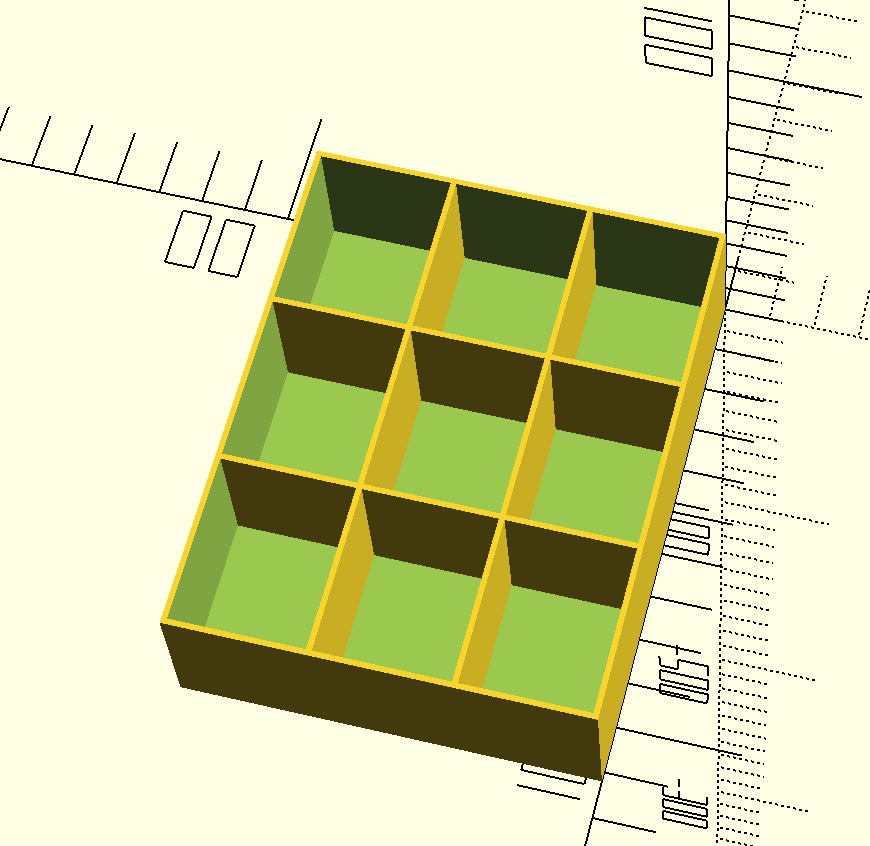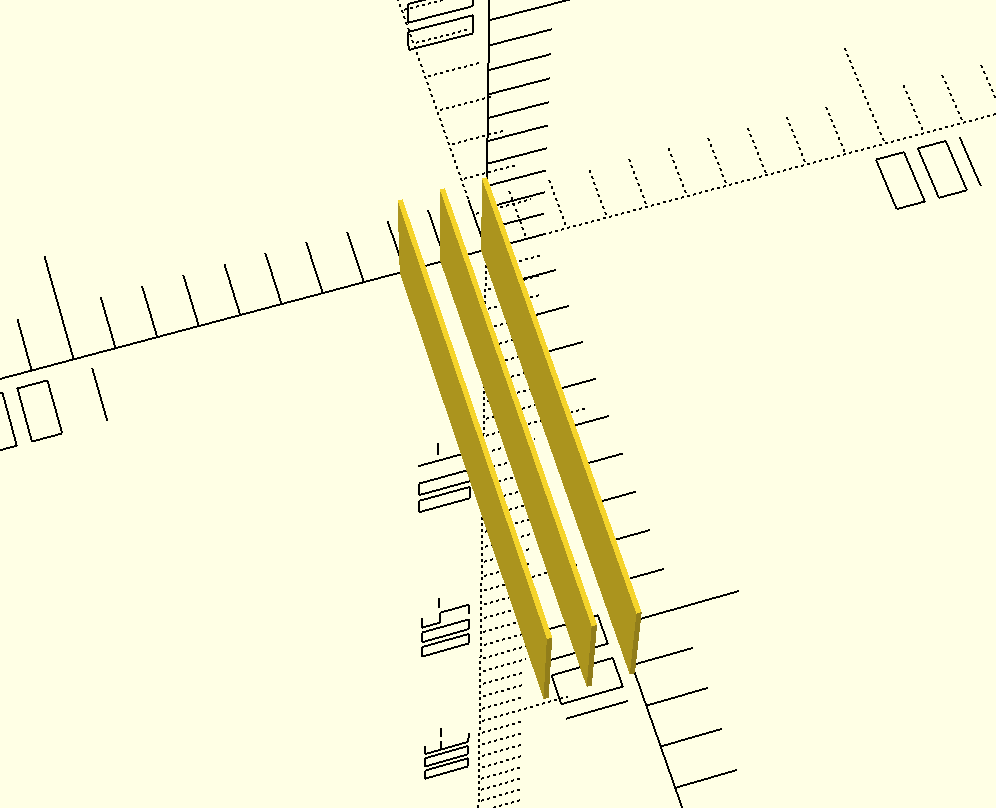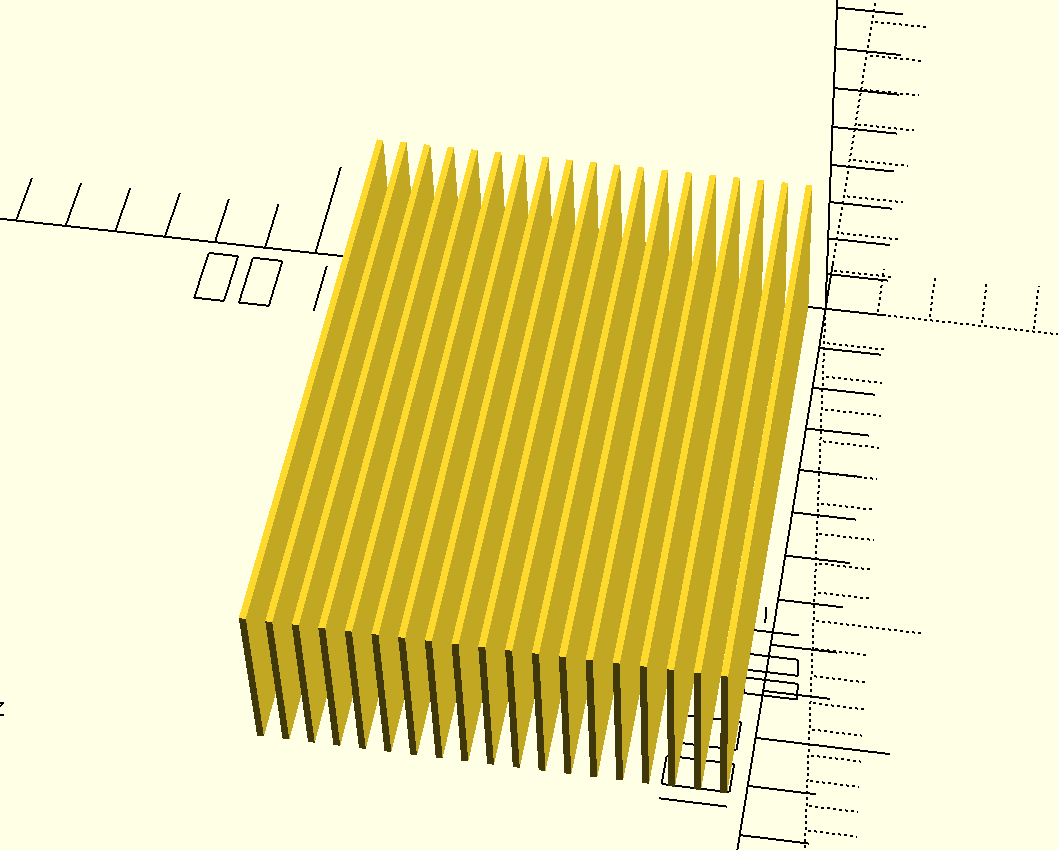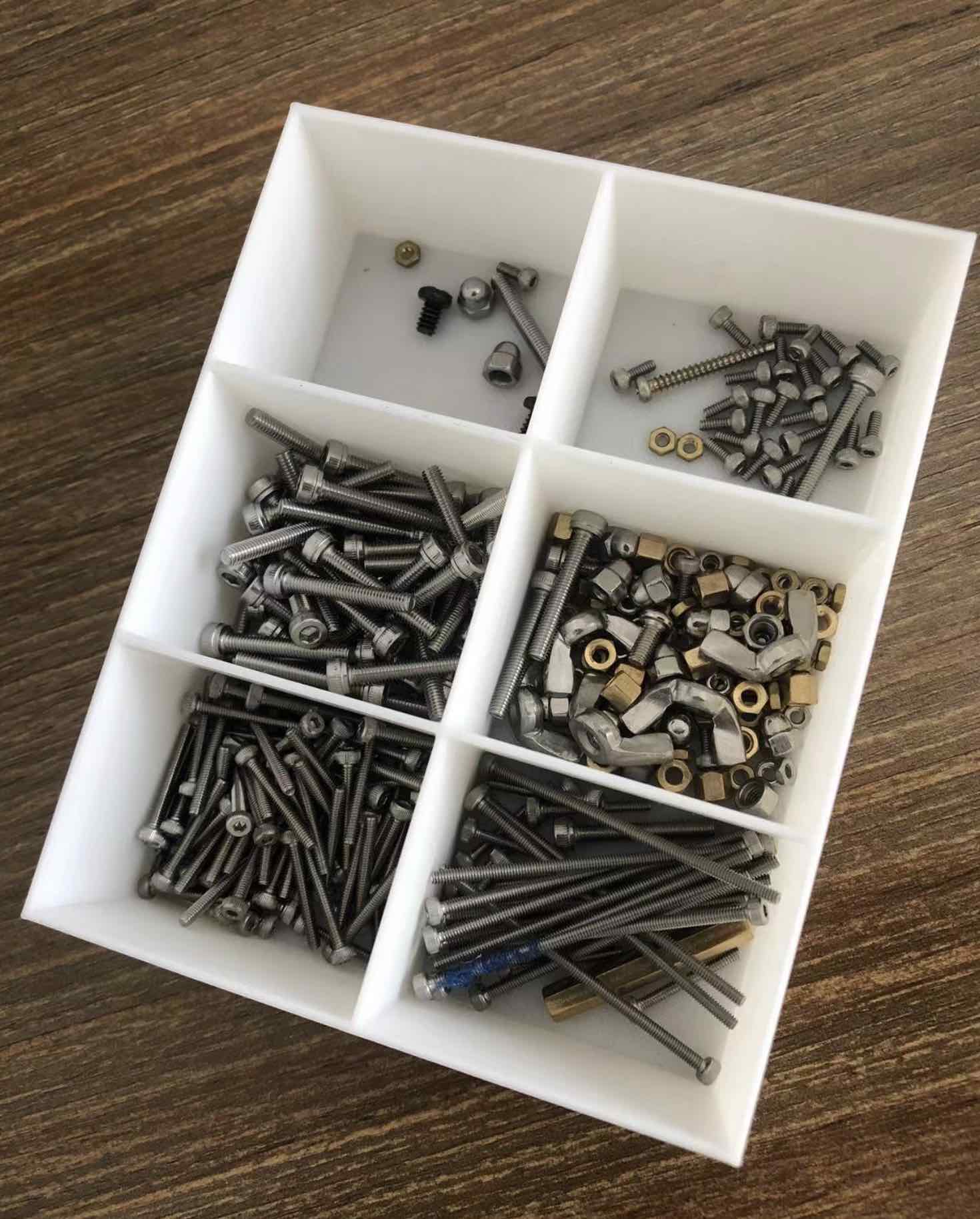OpenSCAD 条件及循环控制
本页内容
和大多数编程一样一样OpenSCAD也支持if else for while等,基于这些我们可以创建更加复杂的模型。
三元表达式
示例
$fa = 1;
$fs = 0.4;
module simple_wheel(wheel_radius=10, wheel_width=6) {
rotate([90,0,0])
cylinder(h=wheel_width,r=wheel_radius,center=true);
}
$is_large = true;
$wheel_radius = $is_large ? 20 : 10;
simple_wheel(wheel_radius = $wheel_radius);条件表达式
示例
$fa = 1;
$fs = 0.4;
module simple_wheel(wheel_radius=10, wheel_width=6) {
rotate([90,0,0])
cylinder(h=wheel_width,r=wheel_radius,center=true);
}
$is_large = true;
$wheel_width = $is_large ? 20 : 10;
simple_wheel(wheel_width = $wheel_width);
$is_large = false;
if($is_large == true){
$wheel_width2 = 20;
} else{
echo("---2---");
$wheel_width2 = 5 ;
}
translate([20,20,20]){
simple_wheel(wheel_width = $wheel_width2);
}需要注意的是变量名称需要改变,因为OpenSCAD是全局的变量,再编译后一个变量改变会导致前一个变量也改变。
循环语句
制作一个带隔板的盒子
接下来我们通过一个实例使用循环语句,这个例子复杂,最后的效果图如下。
盒子隔板
示例
// 单位都是 mm
// 宽度
width = 90;
// 深度
deep = 112;
// 高度
height = 34;
// 壳宽度
shellWidth = 1.2;
//
hSplitCubeNum = 2;
vSplitCubeNum = 3;
// 横向隔离
module hSplitCube(pos){
translate([pos,0, 0]){
cube([shellWidth,deep,height]);
}
}
hSplitCube(0);
hSplitCube(10);
hSplitCube(20);循环替代隔板设置
示例
使用for循环可以轻松改变隔板的个数
// 单位都是 mm
// 宽度
width = 90;
// 深度
deep = 112;
// 高度
height = 34;
// 壳宽度
shellWidth = 1.2;
//
hSplitCubeNum = 20;
vSplitCubeNum = 3;
// 横向隔离
module hSplitCube(pos){
translate([pos,0, 0]){
cube([shellWidth,deep,height]);
}
}
for(i=[1:1:hSplitCubeNum-1]){
echo(i);
#hSplitCube(width/hSplitCubeNum*i - shellWidth);
}完整盒子
完整的代码里面可以通过参数快速设置盒子大小,隔板的个数,壳子的厚度,可以很容易快速的制作出你想要的模型。
示例
完整盒子模型
// 单位都是 mm
// 宽度
width = 90;
// 深度
deep = 112;
// 高度
height = 34;
// 壳宽度
shellWidth = 1.2;
// 2*3 6个小盒子
hSplitCubeNum = 2;
vSplitCubeNum = 3;
// 横向隔离
module hSplitCube(pos){
translate([pos,0, 0]){
cube([shellWidth,deep,height]);
}
}
// 竖向隔离
module vSplitCube(pos){
translate([0,pos, 0]){
cube([width,shellWidth,height]);
}
}
color("#ccc"){
difference(){
cube([width,deep,height]);
translate([shellWidth,shellWidth, shellWidth]){
cube([width - shellWidth*2, deep-shellWidth*2, height-shellWidth]);}
}
for(i=[1:1:hSplitCubeNum-1]){
echo(i);
#hSplitCube(width/hSplitCubeNum*i - shellWidth);
}
for(i=[1:1:vSplitCubeNum-1]){
echo(i);
#vSplitCube(deep/vSplitCubeNum*i - shellWidth);
}
}


